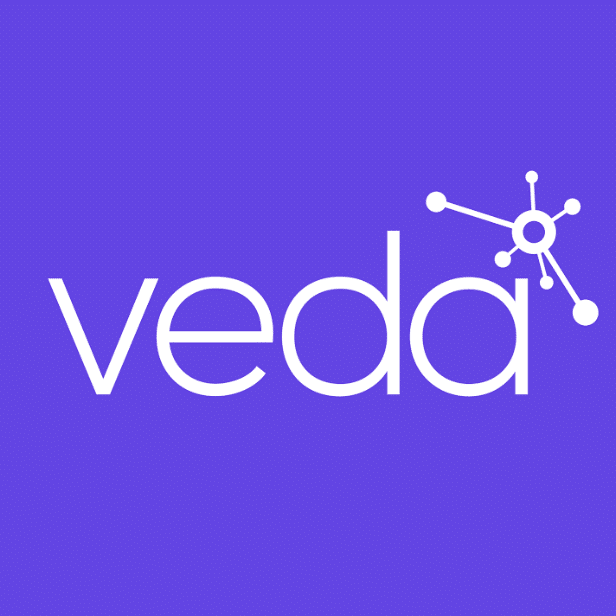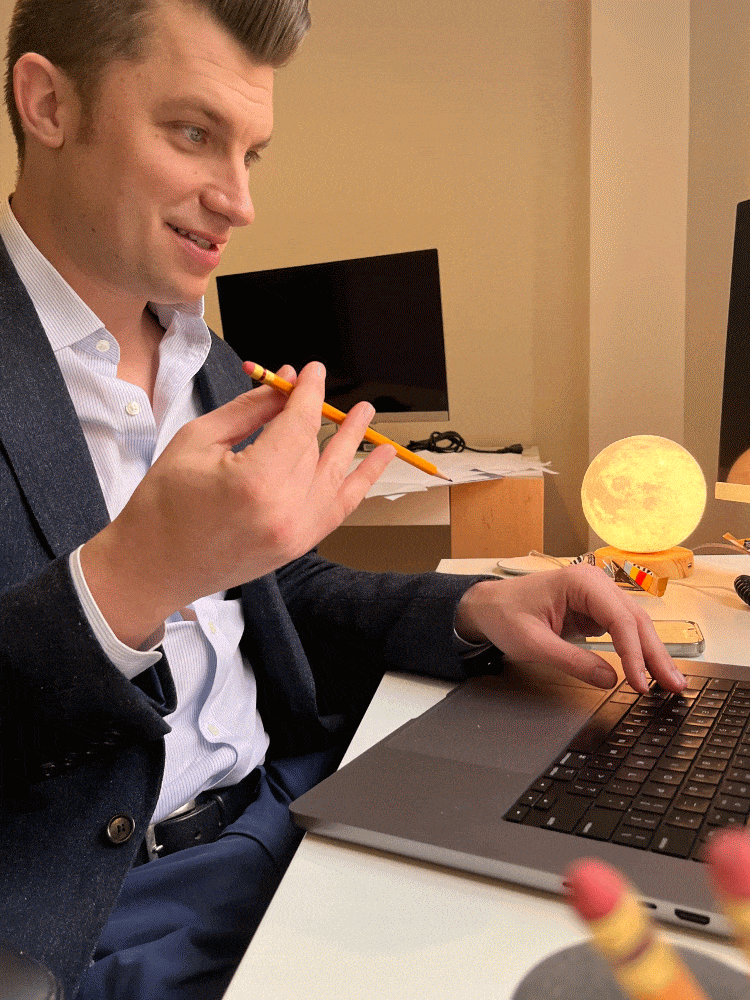
Veda
Automation, Machine Learning, and the Universe: Q&A with Veda’s Chief Science & Technology Officer and Co-founder, Dr. Bob Lindner
Veda’s science department is dedicated to solving complex data issues with creativity and imagination. Learn more about the head of the department, Dr. Bob Lindner, Veda’s Chief Science & Technology Officer, and his journey to co-founding Veda in the Q&A below.

“With automation, we’re not focusing on moving work from humans to machines, rather, how to amplify the power of humans to be more capable in what they’re doing.”
Describe your science background. How did you get interested in astrophysics?
I grew up in Rome, Wisconsin, a small town where you can see a lot of stars and the Milky Way. I wondered about the stars a lot. I was interested in Star Wars and science fiction things. In school, physics seemed like the thing for me.
I wasn’t sure what the jobs were in physics, but I knew there were jobs out there in that field and I found it fun to study. Physics led me into astrophysics and then in grad school, I got involved in observational astrophysics.
For those of us not in the science world, what kind of work are astrophysicists performing?
In my world, I was collecting data from telescopes. This was a lot of fun, hectic, and chaotic because I got to travel around, collect the data, run the telescopes, and analyze the data. One thing was always true: The data is always a mess.
Scientific observers are like the front lines of the science world. The crazy uncalibrated data from the brand-new telescopes lands on their desk.
I spent a lot of years handling this kind of data and making it easier for scientists to work on it. I released the machine learning code Gausspy in 2017 which automates and accelerates the ability for scientists to analyze data from next-generation telescopes. With Gausspy, scientists can test theories using the increased data from bigger telescopes to find out why stars form, why they age and die, and get much closer to understanding the most fundamental question of why we are here.

Automation seems like a natural progression; how did that lead to healthcare data?
When I was a postdoc, I got interested in where else this automation could happen. Of course, there are challenges in science with data standardization, but other sectors experience this too. I got more interested in the process of handling the data, rather than whose data it was. Even in science, I hopped between a lot of subfields of science like radio, infrared, submillimeter, and x-ray and that’s because a lot of times, the data processing challenges are what guided me and not a single science question.
Then I got connected with Meghan to analyze data in the political world. It became clear healthcare data was a more complex and necessary problem that needed tackling, leading to the creation of Veda.
You’re seeing complexity and data problems in many industries.
Yes, Veda has a lot of commonalities that span all industries. The patterns to handle problems within data are stunningly similar. Lots of fields have data that is a numerical value. Perhaps the data is missing, or corrupted, or has an outlier. The way to fix it is largely the same. For example, take text categories and classifications. Galaxies have text classifications like spiral, elliptical, merger. Similarly, doctors have text classifications; these would be specialties like pediatrics and internal medicine.
The way to handle how to classify something into its correct text phrase has a lot of commonalities. It’s important to really understand the domain of the data you’re analyzing but that’s the final flavor for a lot of techniques that span industries.
Another example is time series data. This is one value changing over time. Whether that’s the value of the intensity inside a telescope receiver, or it’s the current stock price of a U.S. security, or it’s the present location of a healthcare provider, tracing it across time has a lot of commonalities. Seeing the patterns of how data behaves across industries has been a lot of fun. It summarizes my background because it explains why it’s in so many different places.
With healthcare data analysis, it wasn’t a huge pivot. It’s really doing the same thing for a different industry.
“Messy data that you want to extract reliable conclusions from spans every topic and institution in the world.”
We have astrophysicists working at Veda, how does that background align with the work the science department is performing?
Astrophysics is a great crash course in what to do with an enormous amount of inaccurate data. It’s the norm and everyday life in that field. The telescopes of the modern era produce terabytes of data every day, you need to get used to having low expectations of how high quality the raw data is going to be.
With healthcare data, people look closely at their databases and find it way lower quality than they are expecting. It can be a stumbling block or even a brick wall to analyze it unless you’re staffed up with folks who have a high fortitude for getting started in such suboptimal conditions.
How does this group of problem solvers get past complex problems?
The project has to move on and so you need to find ways to mitigate, manage, handle, and circumvent all these data suboptimalities. Plus, these elements are not all equal.
It sounds simple but you must take the important things seriously and move past the things that are less important. The important trick here is deciding what effects are the most important ones and which ones can you come back to later. That comes with the process of measurement—making accurate measurements of what the impact of different effects is going to be. If you can do that, it becomes manageable. If you have 15 problems in your data set and you can rank those in order of magnitude, then you don’t have to tackle all 15 at once. You can tackle the first two and make huge gains and you may not come back to the lower ones because you’ve moved on to another priority. That’s really the scientific method. It’s saying “I know there are problems, but I don’t know what to do next. Let’s measure it and see what the data says.” Using those measurements will guide what we do next.
What is your big-picture goal at Veda?
At its highest level, I’m focusing on making sure our technology helps people help people. With automation, we’re not focusing on moving work from humans to machines, but rather, how to amplify the power of humans to be more capable in what they’re doing. We want to empower the users with the power of automation.
Automation and AI frequently get a negative reputation from the public–taking away jobs, and being emotionless. For the most part, machines are actually really narrow in what they can do well. Humans are unmatched at solving problems when a wrench is thrown into the system. Something you didn’t expect that does not conform to rules that the system was wanting to do, a left-field problem. In this area, humans have a problem-solving ability that can never be removed from our philosophy of how to solve problems.
Solving a lot of the messier and more important problems in the world requires end-to-end attention. You can’t cut out the creative power of humans. You need to have them close by in your process.
Tell me about a day in the life of Dr. Bob. What are you doing today?
I make sure I’ve had plenty of caffeine then I do morning Zoom meetings and check in with the team, looking at plots of various kinds, writing code, querying databases, and sketching on paper.
Paper? That sounds pretty analog.
I have a tin of actual pencils with a sharper. When you really need to sketch something out creatively, you can’t be limited to the digital world. You need to put the lines on the paper and you can add structure as you go forward.

Outside of Veda, what things are intriguing to you in science right now?
The pictures of the universe coming out of the James Webb Space Telescope are capturing my attention. The universe is huge and we’re still tiny and that is immensely interesting to me.
THE TOP CHOICE FOR HEALTH CARE
We're the authority on health plan data. See how Veda's Smart Automation platform can work for your health plan. Improve data accuracy, reduce workloads, and enhance the member experience. But first, start with a free demo.